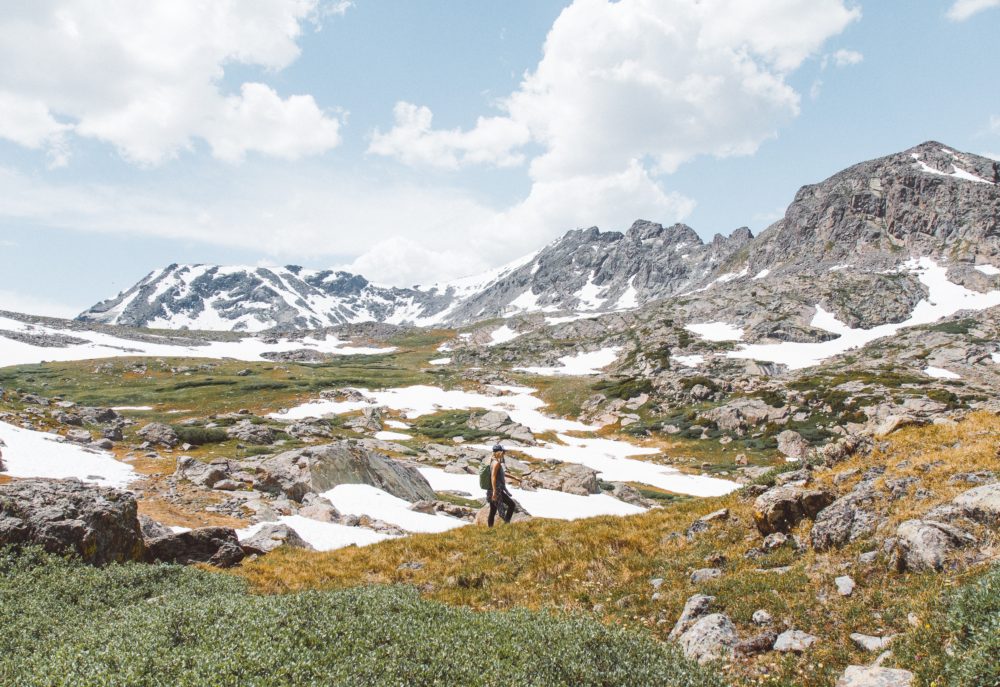Am I the only one who lies about how much I work out? Sometimes, between seeing Instagram gym selfies and friends meeting me for a drink “right after SoulCycle,” it feels that way. Just the other day when my new boyfriend asked me how often I go to the gym, I told him I take a workout class “once a week.” Sure, in my mind I do. In warmer months I go for outdoor runs on weekends, and as autumn approaches I switch to barre classes at my local fitness studio like clockwork. But over the past few years, once winter hits, there isn’t a single receptionist at my gym who would be able to pick me out of a lineup.
Maybe that’s why, when two of my closest friends recently asked me to go on a notoriously difficult hike with them, I said yes without asking for any further details.
The National Park Service’s website refers to Old Rag as, “Shenandoah’s most popular and most dangerous hike. The number of blogs and websites about this hike attests to its popularity. The number of search and rescue missions each year attests to its danger.” Then, directly after that, in the “planning your visit” section, the NPS warns, “never attempt this hike in wet or icy conditions.”

“That what humbles us cannot hurt us, but what puffs up our pride unwaveringly will.” The icy landscape at Shenandoah National Park. Photo by @jacobtise
Growing up near the Shenandoah, I’d heard stories of Old Rag my entire life. It was where my dad’s rock climbing buddy finally fell after his group made the promise that they would all take up climbing together until someone got hurt. In my teenage years, the hike was an ideal summer date day where you could still make it home by curfew. So by the time my friends asked me to hike Old Rag with them in early December, on the coldest day of the year in our region thus far, doing the nine mile hike over the rock scramble (which is code for just intermittent rock climbing) felt like a right of passage that I needed to obtain, as quickly as possible, no matter the weather or circumstances.
And, despite how dangerous it was, and the number of times I didn’t think I would make it, I think I made the right choice by going. Although, that whole “never attempt this hike in wet or icy conditions” proverb proved beyond true. There were times on the side of the mountain’s peak when every visible foothold or place to put your hand was covered with a thick sheet of ice.
My friends definitely had to support me, and once even made me stop to eat a Clif Bar because my body had gotten to a point where my arms and legs were visibly trembling due to lack of energy; and the fact that I was too nervous to eat before we left home. And, although I don’t remember this as vividly, I think I had to support them at times, too. We helped lift each other up 90 degree angles, but more importantly, we coached each other out of the very reasonable fear we each felt from having our freezing feet slip out from under us while scaling the side of an ice-coated mountain.
Although going forward didn’t feel like a choice, as, by the nature of the hike, turning back would have been far more physically strenuous, it still feels like an accomplishment. I spent years defining myself as an athlete. So when I quit college sports my sophomore year and became more of a fair weather workout class patron, I felt like I’d lost a major part of my identity. But this hike made me realize that, in actuality, my athleticism had nothing to do with innate physical ability. For me, it was always about testing my mental limits. If I could run under a six minute mile every day in high school, it made me feel strong. How sore my legs were that night in my twin sized bed gave me the reminder I needed that I could persevere, that I could keep going even when I really, really didn’t want to.

Shenandoah National Park. Photo by @harding_brown
I needed the reminder. Pushing myself up that mountain a few weeks ago had far more to do with my emotional state that how much weight I can lift at the gym. The ability to push past mental blockades defines real athleticism. Staring fear in the face yet managing to say, “I’m still game” (while still understanding my boundaries) is an ability that proves far more meaningful.
I often wondered if I was still strong if I wasn’t proving my physical abilities multiple times a week on cross country trails or in spin class. This experience, however, proved that even if I’m not constantly having my strength tested, it’s still there when I need it. I can still advocate for myself in my relationships even if I don’t have to all the time. I can still climb a mountain even if it makes my entire body shake. Ultimately, the strength I felt on this particular hike came from within, not what I assumed my body could or couldn’t handle; and unlike my motivation to leave my warm apartment and hit the gym, that type of inner strength doesn’t leave during the winter months.
Feature photo by Holly Mandarich.











Leave a reply